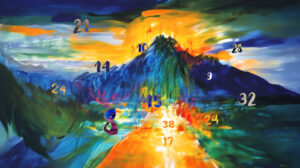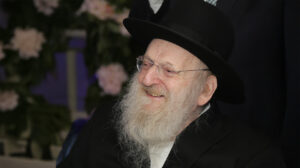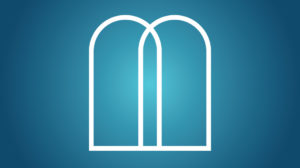Gratitude and Focus

The pidyon haben ceremony underscores our special role as the chosen nation
Hakaras hatov is the foundation of Yiddishkeit. Our very name, Yehudim, reflects our essence of being grateful people. There are particular mitzvos that tap into the incredible energy of
Parents who are both descended from Yisraelim must redeem their firstborn son on the 31st day of his life, provided he was born by natural birth. The child has left the status of nefel and is considered viable. A firstborn is redeemed by the father giving five sela’im to a Kohein. Originally, the firstborns were gifted with the responsibility of serving Hashem. When all the Jews, including the firstborns, sinned with the golden calf, this job was transferred to the loyal tribe of Levi.
Since the child is technically a Kohein, he needs to be “replaced” by a Kohein from the tribe of Levi, and this is accomplished by the father redeeming the son with the five silver coins. The Novominsker Rebbe adds that the pidyon haben also serves as a reminder that during Makkas Bechoros, Hashem established that we are the “beni bechori Yisrael,” the chosen nation of Hashem. Therefore, we redeem the firstborn specifically from the mother, since she’s the one who establishes the fact that a child is Jewish and part of the chosen nation of Hashem.
There are two main reasons why the redemption is done with specifically five sela’im. Meshech Chochmah suggests that it’s based on the amount for which the brothers sold Yosef, the bechor of Yaakov. Sefer Ta’amim U’minhagim suggests that when the exchange was made in the desert between the firstborns and the Leviim, the “remaining” firstborns paid five sela’im to redeem themselves.
Mid-Meal Mitzvah
The seudah for a pidyon haben is a seudas mitzvah. What is unique about this seudah is that one washes and begins the seudah and only then performs the mitzvah. Usually, a seudas mitzvah is eaten after the mitzvah has taken place, like at a wedding or a bris. Rav Kaufman in Mishchas Shemen offers two ideas to explain this phenomenon.
First, pidyon haben is an atonement for the sale of Yosef, Yaakov Avinu’s firstborn. Yosef was sold in the middle of the meal the brothers were eating. Therefore, in order to remind ourselves of this sale and to atone for it, we redeem this child specifically in the middle of the seudah.
Second, the process of redemption reminds us of the great miracle of Hashem saving the firstborn sons the night of Yetzias Mitzrayim. In order to recreate that special moment of salvation, we eat a meal, reminding ourselves of how the Jews partook of the matzah and Korban Pesach at the time that the plague was transpiring. This reenactment allows us to feel deep gratitude to Hashem for all the kindnesses that He has done and He currently does, with the birth of this firstborn.
Blending Worlds
Seforno explains that pidyon haben marks a transition: The child is no longer completely dedicated to Hashem, and he can perform mundane activities. Indeed, Nachlat Ze’ev teaches that the intrinsic kedushah with which a child is born remains with the firstborn until the pidyon haben. Rav Yaakov Kamenetsky therefore wonders why we make a seudah to celebrate this transition from holiness to mundanity. He explains that the different attitude that Yiddishkeit has toward the physical world in comparison to other religions helps us understand the answer.
Other religions see a clear demarcation between body and soul. Non-Jews are only allowed to offer a Korban Olah, in which the entire animal is burned. Judaism is unique that we are able to blend physical and spiritual, and the partnership enables a person to come closer to Hashem.
If the firstborn wasn’t redeemed, he’d remain holy his entire life. The seudah at the time of redemption is a celebration of the fact that the child can live a life of physicality and simultaneously elevate it to spiritual heights. This idea is reflected in the special brachah given to the child when the Kohein receives the money: “The child should enter into chayim tovim, Torah, and yiras Shamyim.” It’s yiras Shamayim that will enable the child to integrate the two worlds successfully.
Priorities and Focus
Maharal explains that we dress the child in nice clothes and adorn the tray we place him on with gold and silver jewelry as part of chavivus hamitzvah and hiddur mitzvah. This is similar to the way the Jews adorned the bikkurim when they brought them to the Beis Hamikdash. The similarity in these two mitzvos focuses our attention on the deep need for gratitude in fulfilling this mitzvah. Others explain that the jewelry is to be a counterforce to the jewelry given to the golden calf — here we use it to elevate the mitzvah.
The Kohein asks the father what he prefers, the child or the money. Petchei Teshuvah explains that this is to endear the mitzvah to the father and to reinforce that this is something he wants to spend his money on.
Rav Kahaneman adds that this question enables the young father to focus on the goal of parenting: chinuch versus money. This question needs to reverberate in the father’s mind as he educates all his children. What are the priorities of this father; how does he spend his time and energy? After the redemption ceremony, the Kohein blesses the child with Bircas Kohanim, which is symbolic of the avodah that the Kohanim continue to do until this day.
Ta’amei Minhagim states that one who partakes of the seudah of a pidyon haben is as if they have fasted 84 fasts. The simple understanding is based on the pasuk in Bamidbar 3:49: “Vayikach Moshe es kesef hapidyom.” The last word can be divided as 84 (pei and daled) and yom, day. This number also corresponds to the fasts one could fast during the days of Shovavim. It’s also the age at which Yaakov Avinu married the Imahos, and he was a tikkun of Adam Harishon.
Zocher Habris notes that it’s “as if” one fasted 84 fasts. This corresponds to the 84 times the Gemara describes an action using the term “as if,” (e.g. if one gets angry, it’s as if he worshipped idols). The seudah comes to atone for all those times we acted “as if.”
Because of the power of this seudah, the minhag is to give out garlic and sugar to the guests that they can share with their friends, to cook in many more meals. Lekutei Pinchas suggest that the sugar represents a good sign of sweet things. The garlic is to ward off the ayin hara.
The pidyon haben ceremony underscores our special role as the chosen nation. It reminds us to appreciate all the gifts that Hashem gives us and to use them in His service.
(Originally featured in Family First, Issue 744)
Oops! We could not locate your form.







